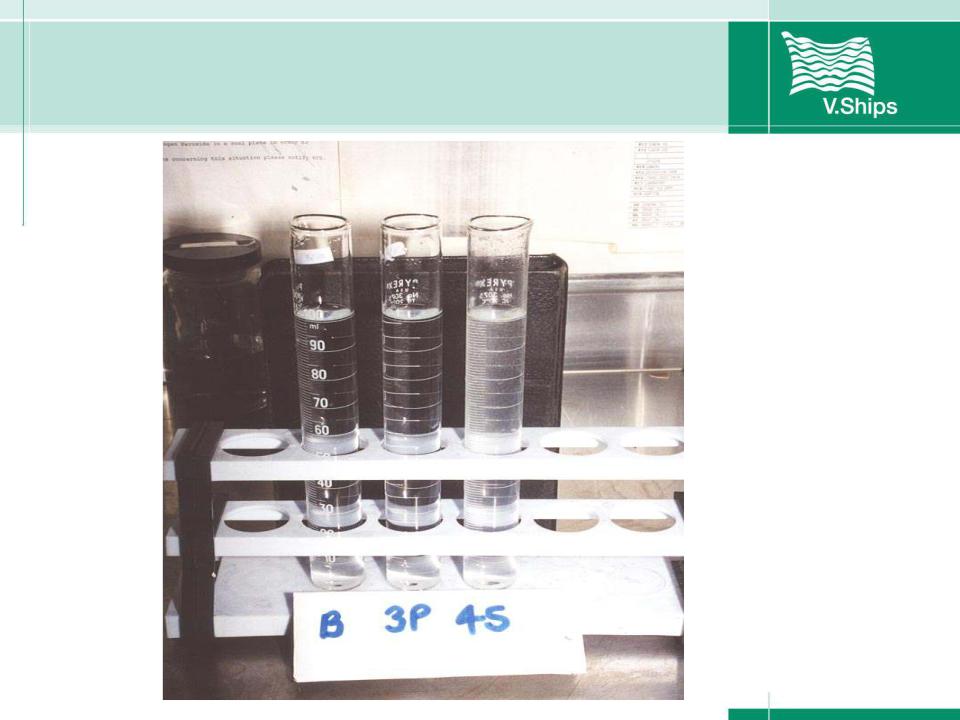
Chemical Tankers / Day 3 / Day 3 Topic 4 Wall-Wash & Analysis
.pdf
Standard Laboratory Procedures:
Back in the laboratory, there are a number of basic tests which we can readily perform but, as we have seen ,some tests cannot be carried out accurately on board and we do not carry the equipment necessary for others
The tests regularly performed are?
Delegates to Discuss & list the tests.

Wall Wash Techniques and Sample Analysis
Hydrocarbons (Miscibility)
Chlorides
Permanganate Fade Time
Appearance
Color
Odour

Wall Wash Techniques and Sample Analysis
Hydrocarbons (Miscibility)

TESTING FOR HYDROCARBONS (Water
Miscibility)
Using a clean Nessler Tube, pour 25 ML. of wall wash sample from jar. To this, add 75 ML. of deionized water. Stopper and invert tube to mix same and allow to stand for about 20 minutes. Place the tube on a black surface. Turn off lights to darken room and shine a wide beam flashlight from a distance of 15 CMS through the side of the tubes while looking down through the liquid columns.

TESTING FOR HYDROCARBONS (Water Miscibility)
Often a pen light is used for this test, due to the intensity of the beam it is more critical and if this method used on a pure standard tube (25 ML. Laboratory methanol and 75 ML. de-ionized water), even in the standard there will sometimes be a faint whitish trace visible when using a pen light.

TESTING FOR HYDROCARBONS (Water Miscibility)
A standard solution, consisting of 25 ml. Of laboratory methanol and 75 ml. of de-ionized water should always be prepared to compare the wall wash samples. If a bluish tint is present, there are moderate to heavy hydrocarbons. If a whitish haze is observed, this usually indicates slight hydrocarbons.
Factors which could affect the accuracy of this test are:
If the the graduation numbers on the tubes are in blue, if the column is dirty, or if the bulkhead is damp.

TESTING FOR HYDROCARBONS (Water Miscibility)

TESTING FOR HYDROCARBONS (Water Miscibility)

Wall Wash Techniques and Sample Analysis
Chloride Test

CHLORIDE TEST
Using the same tube in which the water miscibility test was done (if no hydrocarbons were found), add 5 drops of 10% Silver Nitrate solution. Stopper and invert the tube to mix, and observe if any turbidity is formed. To do this, compare the turbidity of the sample with the standard by looking down through the liquid against a black background. Comparison of wall wash samples to a standard should be done by looking down through the tubes using a wide beam flashlight held about 30 CMS from the sides of the tubes.
|
more >>> |
